Pompeii, Italy was once a thriving Roman city full of art, flourishing trade, and elegant architecture. Today, it is one of the most famous archeological sites on the planet – drawing visitors and historians from all over the world.
Pompeii is regarded as the “city frozen in time”. In 79 A.D, neighboring volcano Mt. Vesuvius erupted, sending tons of debris into the air and burying the entire city under 19 feet of ash. Nearly 2,000 years later, the city was rediscovered and excavated. Remarkably, it remained largely intact. Today, buildings stand as they did thousands of years ago – and some even retained their original paint. Even the citizens living in the city remained, encapsulated in ashen tombs.
Pompeii has taught historians a great deal about the lives of ancient romans, and the operating practices of the ancient world. If you are making the journey to Italy, then visiting Pompeii is a must!
Below is my ultimate guide for visiting Pompeii.
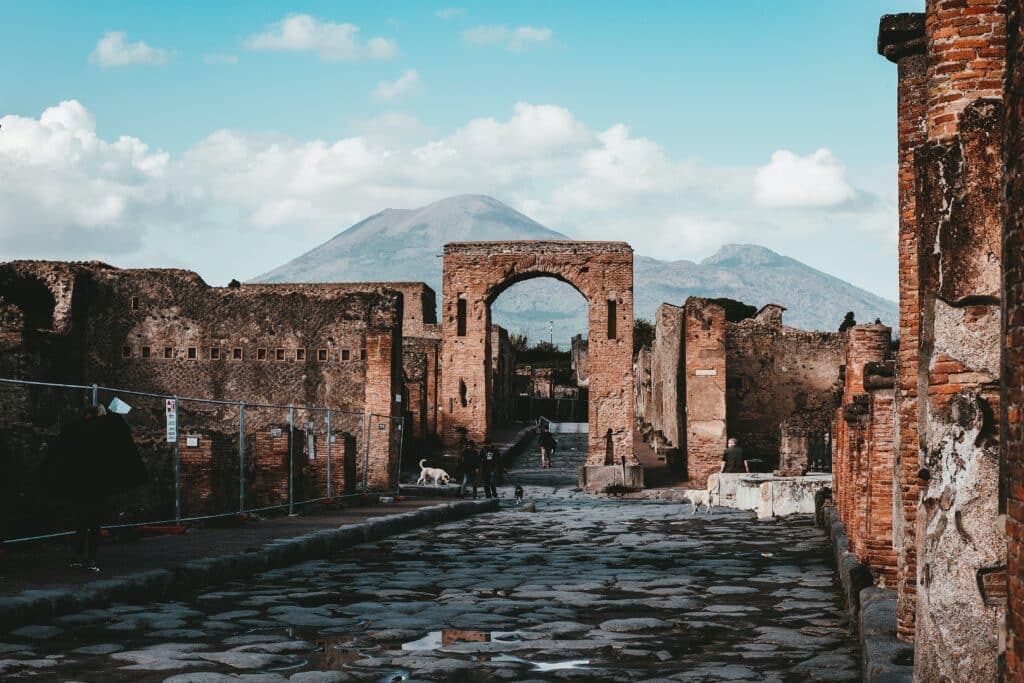
Getting to Pompeii, Italy
Where is Pompeii?
Pompeii is located in the Campania region of Italy. The ruins lie just south of Naples, along the coast of the Bay of Naples. Its location made the city a popular location for wealthy Roman citizens – and agriculture flourished in the area, due to plenty of rich volcanic soil.
Traveling to Pompeii is typically done by train. If you are staying in one of the larger cities, such as Rome or Naples, you can catch a direct route to the ruins.
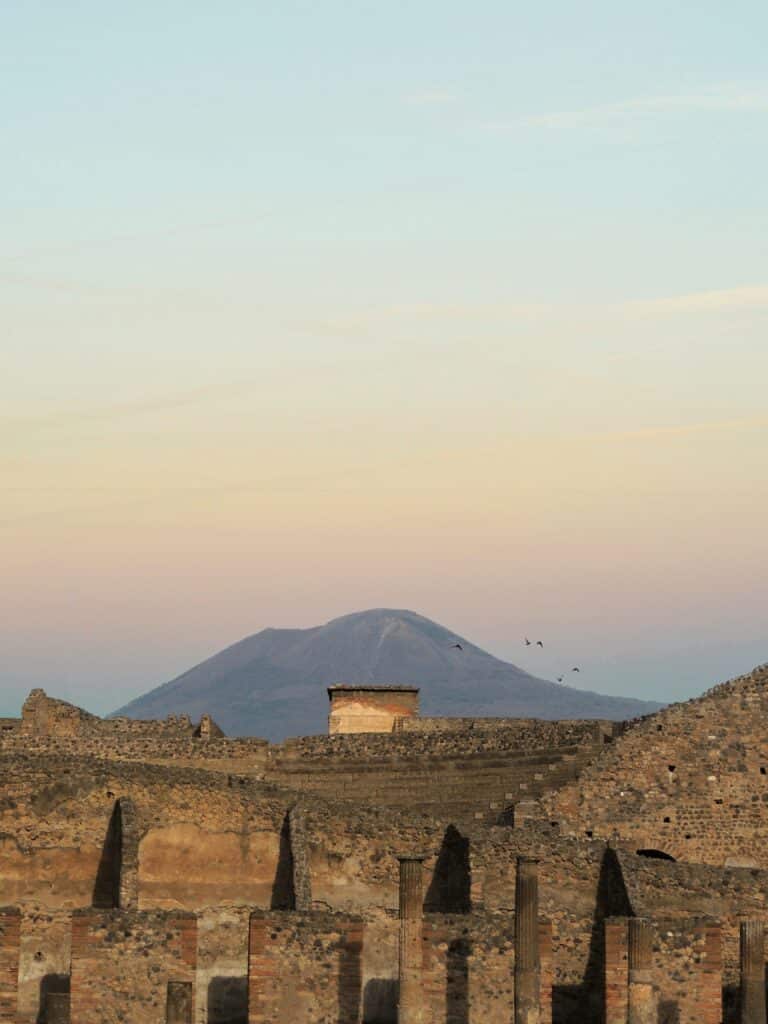
Traveling from Rome
There are many established Pompeii tour groups that provide day or weekend trips to Pompeii. These tours are a hassle-free way to reach the ancient city. You can catch the shuttle from Rome to Pompeii, or you can upgrade your ticket to include a tour. A tour and transportation from Rome costs around $145 USD.
You can find day trip tours from Rome to Pompeii on Get Your Guide, Viator, and other major tour sites.
If you want to forgo a shuttle bus and depart for Pompeii on your own, catch a train departing out of Rome’s Termini station. A direct, high-speed train can get you from Rome to Pompeii in just around two hours. Cheaper trains are available, but often require a transfer in Naples.
Traveling from Naples
Pompeii is significantly closer to Naples, and only requires 30-45 minutes of travel to reach the ancient city. From Naples, bus or train is the way to go.
Naples has two train lines that take visitors into Pompeii: The Circumvesuviana, and the city metro. Either option will suffice, just make sure you allocate enough time to get to the city before your scheduled entrance time.
The SITA bus station in Naples is the pickup point for any guests wanting to visit the ruins. The Napoli-Salerno line will get you closest to the entrance point. The bus costs less than 3 euros each way.
Touring Pompeii Italy
How much does visiting Pompeii cost?
An entrance ticket to Pompeii costs around 21 Euros ($25 USD). With this ticket, you are free to wander around and visit the archeological sites and structures.
A guided tour of the city costs around 40 Euros ($45 USD). This purchase includes entrance to the park, and a two hour guided tour of the archeological sites in small groups.
I recommend buying your tickets online ahead of time if you are planning to travel there alone. You can purchase tickets from Pompeii’s website, or from a third party vendor.
Can you tour Pompeii on your own?
You can absolutely tour Pompeii on your own. However, there are parts of the site that are off-limits, as they are being actively excavated by archeologists.
That said, I highly recommend booking a tour for this experience. Pompeii tour guides offer a wealth of knowledge about the ancient city, and can give you far better insight into how ancient Romans lived in the city. They can also explain the significance of the various buildings, items, and pieces of art featured within the site. It is well worth the extra 20 Euros.
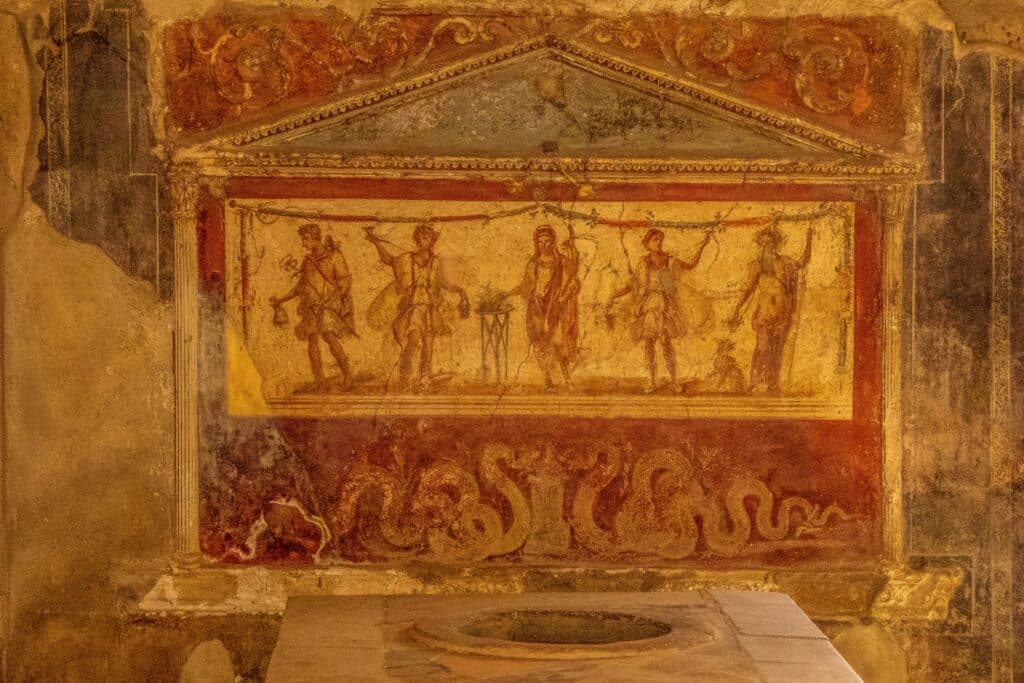
What should I bring with me to Pompeii?
Pompeii is… for lack of a better word… HOT. And there is absolutely no shade to be found. With that in mind, here are a few must haves for your visit:
- Water bottle (you can refill this inside)
- Sunscreen
- Sun hat
- Sunglasses
- Comfortable shoes that you can walk in
- Light clothing (but I recommend something that can cover your shoulders!)
- Snacks (granola bars, etc.) – though these can only be eaten in designated areas.
Is there a dress code for Pompeii?
There is no strict dress code for visiting Pompeii. Just remember that you are going to be in direct sun, and it will be hot. Make sure you wear clothing that is comfortable and light, and wear shoes that you can walk in for a significant amount of time.
Can I bring a backpack into Pompeii?
Large backpacks are not allowed in Pompeii. You can check large bags free of charge in the cloak room at the entrance gate. Small bags are allowed.
What is the best time of year to visit Pompeii?
Because Pompeii is known to get very hot and very crowded, I recommend visiting in the late fall and winter between November and March. This is typically the offseason. You will run into fewer tourists, and it will be significantly less hot. Avoid traveling to Pompeii between June and August.
What is the best time of day to visit Pompeii?
I recommend visiting Pompeii either first thing in the morning, or in the early afternoon. An early tour can help you beat the crowds, and most of the tourists will leave the site around 2 or 3 PM.
The ticket office opens at 8:30AM. If you are the first in line, you have a great chance of being able to see a majority of the site before others arrive. I would say that the crowds really start to pick up around 9:30 or 10 AM. So plan accordingly! As a bonus: it will also be significantly cooler during this time as well!
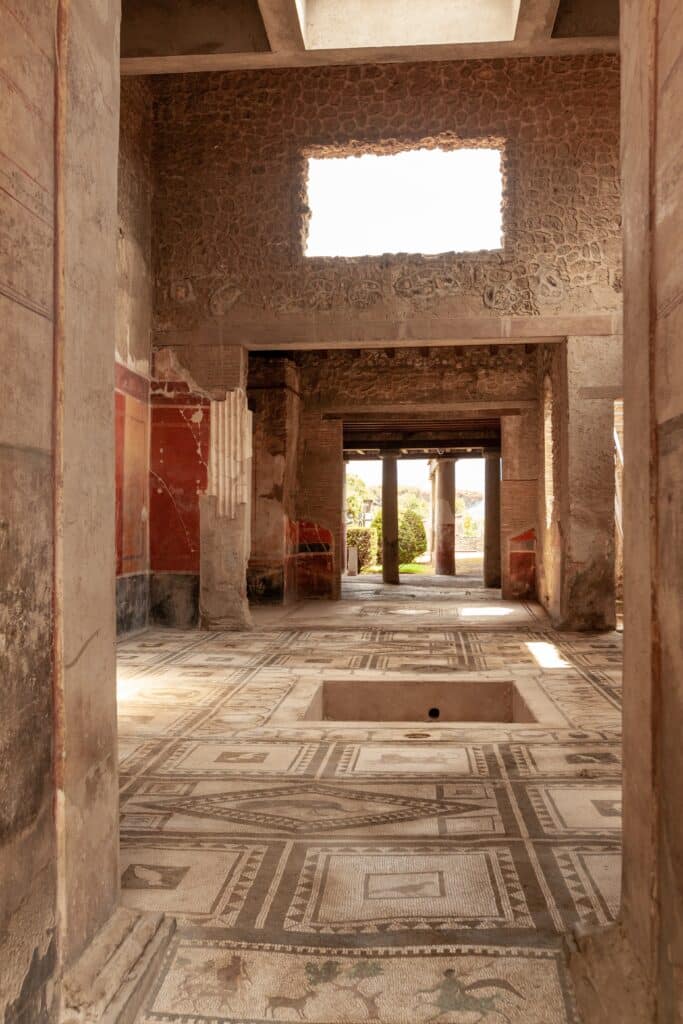
Places to check out in Pompeii Italy
1. The Amphitheater
Similar to the Colosseum, the amphitheater in Pompeii was used to host bloody battles, gladiator games, and public executions.The arena could hold up to 20,000 spectators, and drew visitors from nearby areas. Around 59 A.D, a huge brawl between neighboring roman cities broke out within the amphitheater, causing the senate to temporarily close off the arena.
2. The Forum
The Forum is Pompeii’s city center. Similar to Rome, Pompeii’s Forum contains the major buildings of the senate, remains of a bustling marketplace, and sacred religious buildings and temples. You can still view many of these sites today.
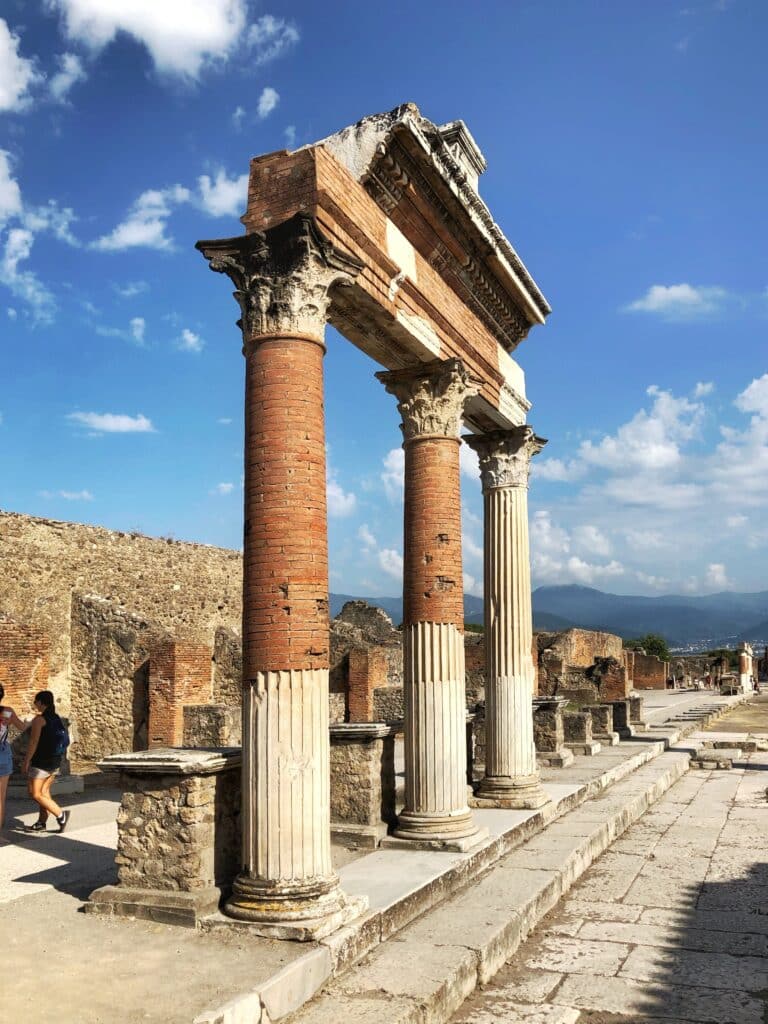
3. Pompeii Bathhouses
There are three major bathhouses in Pompeii: The Forum Baths (adjacent to many of the Forum’s religious temples), the Stabian Baths, and the Central Baths. Bathhouses were a staple in Roman history – and those found in Pompeii are no exception.
Perhaps the most interesting fact about the baths was the Roman understanding and control of water temperature. Guests had the option to bath in the frigidarium (cold baths), the tepidarium (tepid baths), or the caldarium (heated baths). The baths were heated by a furnace system located underground – an engineering feat, given the time! I highly recommend checking out all of the bathhouses in the city.
4. House of the Faun
The House of the Faun gets its name from the tiny, bronze, dancing faun statue located in one of the two atriums. This is one of the most magnificent and luxurious homes in all of Pompeii, and gives a glimpse into the lives of the wealthy. A well-preserved ‘HAVE’ mosaic welcomes visitors (in Latin) to the home, and much of the remaining artwork is still in-tact.
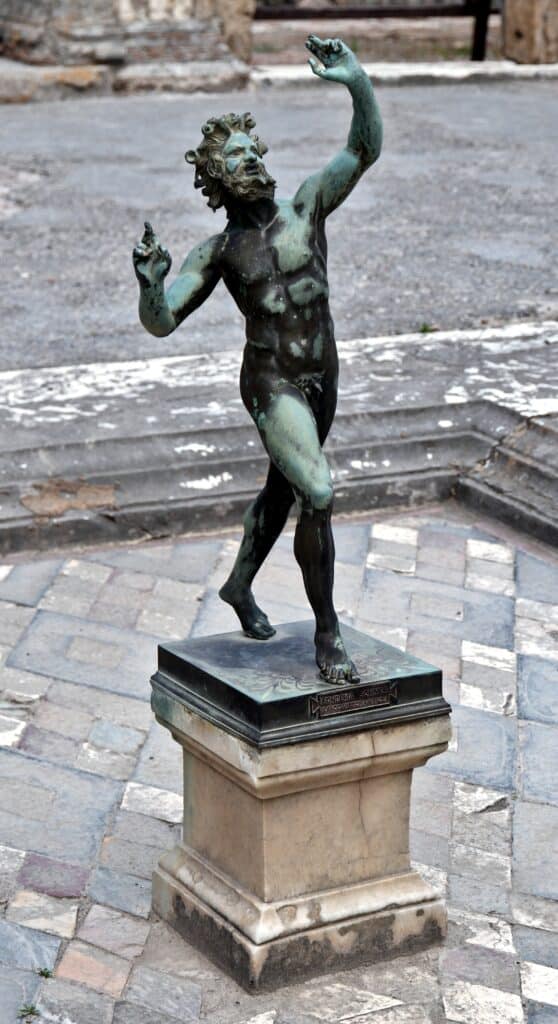
5. House of the Vettii
This magnificent home was owned by two brothers, who received their freedom after years of slavery. Historians believed that they formed their wealth through successful trade ventures – as they were unable to climb in politics due to their status.
In this structure, you can find some of the most well-preserved artwork in the city. The House of the Vettii recently reopened to visitors, and is a must-see in Pompeii!
6. Garden of the Fugitives
One of the most sad locations on this list, Garden of the Fugitives is an excavated and carefully regrown orchard in Pompeii. Most notably, however, contains plaster molds of thirteen civilians frozen in time as they attempted to escape the volcanic ash descending on Pompeii. It is a horrifying and somber look into the last few hours of live in the city.
7. The Brothel
Pompeii is thought to have been a city of extravagance and indulgence. This is highlighted in the uncovering of a brothel near the city center. The brothel contains some of the most well-preserved paintings in the site. Because Pompeii was a port town, it brought travelers from all over the area – many of whom did not speak Latin. Instead, they could point to the frescos on the wall of the building and “order” the services they wanted.
Many of the women working in the brothel were, sadly, slaves brought to Pompeii from neighboring areas. The silver lining here is that we actually know many of their names today due to graffiti in the structure and city.
A few final ‘fun facts’ about Pompeii Italy
1. Fast Food
Pompeii had ancient fast food! Food was placed in large counters, known as thermopoliums, and the food would be kept warm through a combination of terracotta jars and heat from the sun. City goers could select the food they wanted to purchase, and take it away to eat. As an added fun fact, you can still see the artwork painted onto the food counters – which acted as a menu of sorts.
2. Street Lights
Small, white stones line the streets from Pompeii’s city center back to the ports. The light from the moon reflects on the stones, helping illuminate the pathway – not unlike streetlights! Archeologists believe that these stones helped guide sailors back to their ships after a night of drinking in the center.
3. Graffiti
Much of the paint on buildings in Pompeii remains preserved to this day. As you explore the site, you can see graffiti, election notices, murals, menus (in brothels and restaurants), and much more. This gives historians a much deeper understanding of Roman living (and sometimes, their sense of humor!).
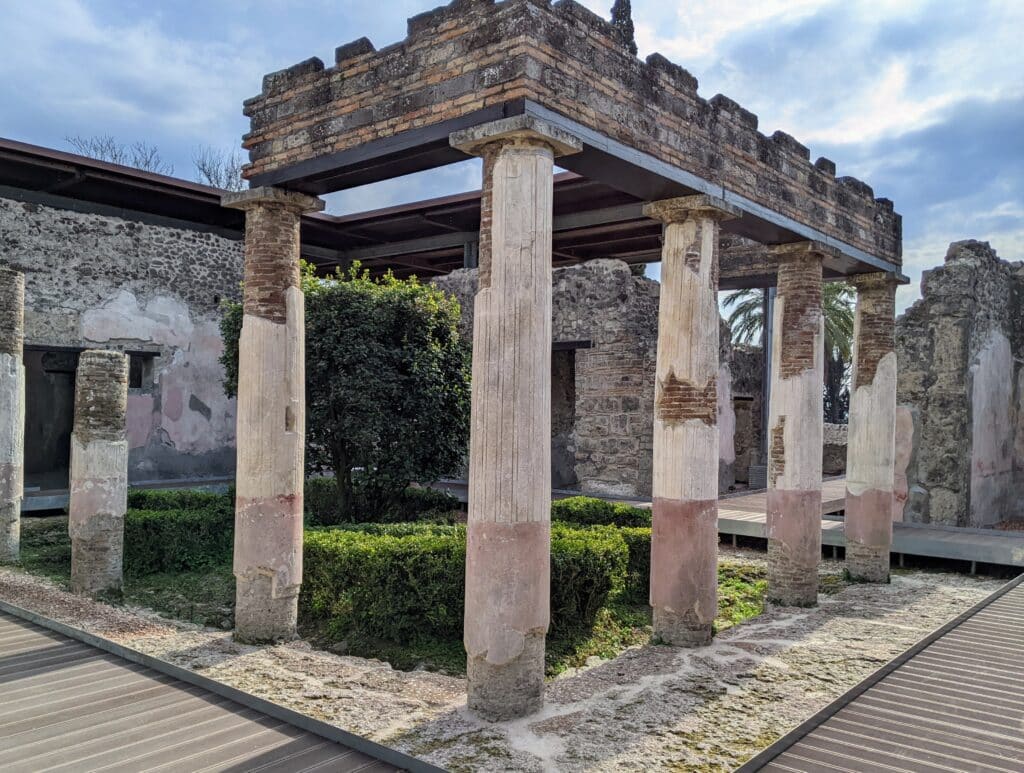
That’s All, Folks!
Hopefully this guide gives you a great starting point when planning your trip to Pompeii Italy! Pompeii remains one of the most unique locations I have ever visited. It is well worth the journey!
Have you been to Pompeii? Leave a comment with your favorite spots below!
Check out the rest of my bucket list for more inspiration!

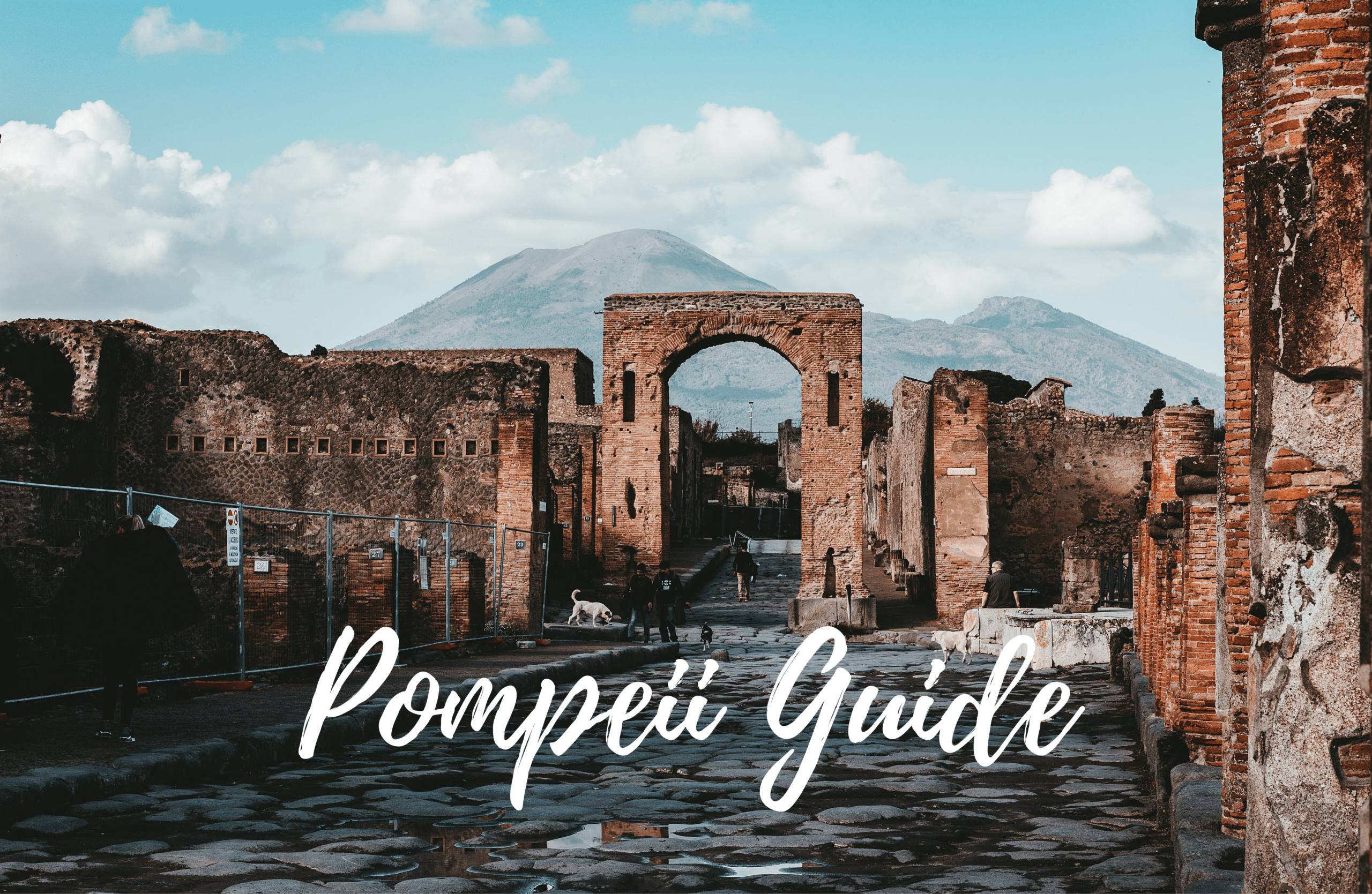






0